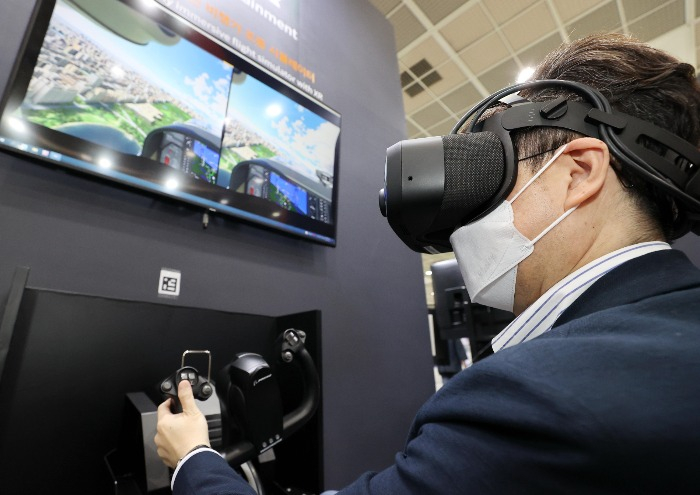Microdisplays poised to emerge in growing XR market
The XR sector is forecast to triple in value next year, with Samsung and LG spurring tech advances
By Dec 08, 2022 (Gmt+09:00)
LG Chem to sell water filter business to Glenwood PE for $692 million


Kyobo Life poised to buy Japan’s SBI Group-owned savings bank


KT&G eyes overseas M&A after rejecting activist fund's offer


StockX in merger talks with Naver’s online reseller Kream


Mirae Asset to be named Korea Post’s core real estate fund operator



The slowly growing extended reality (XR) market next year is expected to explode as global big tech companies get ready to launch augmented (AR) and virtual reality (VR) devices. XR is a catch-all term that covers technologies like AR and VR.
The market research company Display Supply Chain Consultants (DSCC) on Wednesday said next year's global market for XR displays will reach an estimated $2.5 billion (3.3 trillion won), three times the forecast this year of $942 million.A DSCC source said, "The XR market in 2027 will reach $7.3 billion," adding, "The market after next year will grow more than 50% per year."
As early as the second quarter next year, Apple is expected to unveil its tentatively named XR headset Reality Pro and Sony has announced releasing in February a VR headset usable with its console game controller. Samsung Electronics Co. and Google are also eyeing this market.
Major corporations are rushing to launch new XR products because XR display technology has passed an inflection point. Conventional XR devices mainly have with LCDs but grabbing attention are those with microdisplays to allow an immersive experience. The main players being micro OLED displays called OLEDoS, or OLED on Silicon, and micro LED dubbed LEDoS, or LED on Silicon.
Unlike displays based on glass and plastic as substrates, OLEDoS deposit OLED elements on the semiconductor material silicon wafer substrate and LEDoS does the same with LED elements. With the substrate shrinking in size, the process of engraving the driving circuit on the substrate has grown more detailed, enabling high resolution and brightness or luminance even at a size as small as a fingernail.
Samsung Display and LG Display Co. are busily developing technology in both OLEDoS and LEDoS.
An industry source said, "VR requires virtual reality completely disconnected from reality and AR, under its concept of augmenting the virtual world based on the real world, needs a higher-spec display in AR devices," adding, "OLEDoS will be used for VR devices and LEDoS for AR devices."
Write to Sungsu Bae at baebae@hankyung.com
-

-
 MetaverseMeta, Seoul National University jointly set up XR research center
MetaverseMeta, Seoul National University jointly set up XR research centerJun 30, 2022 (Gmt+09:00)
1 Min read -
 Artificial intelligenceVirtual humans expand territory in real world
Artificial intelligenceVirtual humans expand territory in real worldMay 31, 2022 (Gmt+09:00)
3 Min read -

-
 MetaverseCJ ENM to build virtual studio with Samsung’s new commercial displays
MetaverseCJ ENM to build virtual studio with Samsung’s new commercial displaysJul 26, 2021 (Gmt+09:00)
1 Min read


